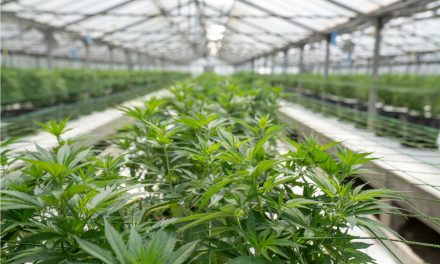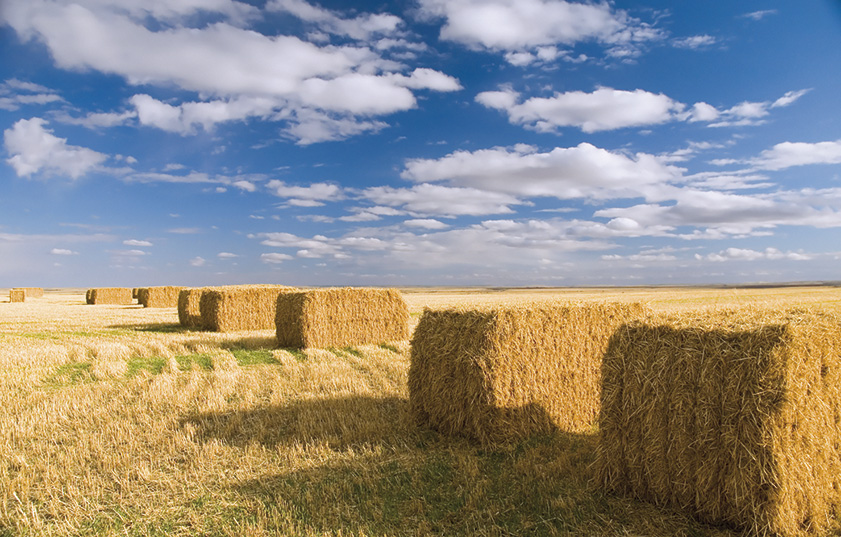
Soil regeneration

Right from the start, agriculture has used chemical substances and compounds to disinfect areas of cultivation, as well as to keep under control pests, insects, weeds or certain types of vegetation that can compromise soil integrity.
One of the most commonly used compounds for disinfection was methyl bromide. However, after discovering that it caused severe damage to the ozone layer, a gradual process began until it was eliminated from the agricultural market in the majority of countries that used it.
As a result, agricultural producers had to look for other alternatives to perform the process of soil regeneration. In this article, we will talk about the current alternatives being used and the role of plastic films in the treatment of soils.
Soil regeneration: a little background
Methyl bromide was widely used as a pesticide, not only in agriculture to remove insects, mites, nematodes, fungi, viruses, bacteria and weeds present in the soil, but also in warehouses and for quarantine treatments.
Because of its wide spectrum of activity and easy application, methyl bromide was considered one of the most economical products that could be purchased to eliminate living organisms that could come in contact with a specific area or crop. As a result, many agricultural producers around the world became dependent on the fumigation with methyl bromide. However, it was a product that degraded with difficulty and ended up accumulating excessively, especially in the usable organs of plants and cultivated foods, posing a great risk to human health.
Faced with this situation, a meeting was held in Copenhagen in 1992 where methyl bromide was officially recognized as one of the main active substances responsible for the deterioration of the ozone layer.
Why did this alarm everyone? Because a decrease in the ozone layer implies that the level of type B ultraviolet radiation would increase significantly upon reaching the earth’s crust, thus increasing the risk of skin cancer and the onset of eye diseases.
For plants, the increase in type B radiation meant a decrease in photosynthesis, since the radiation used by plants is radiation whose wavelength is between 380 and 730 mm. Besides, the increase in radiation could cause an increase in the average temperature of the earth, so the ice of the poles would certainly begin to melt, causing the sea level to rise.
So, these and other reasons explain the decision to progressively reduce the application of methyl bromide until its total ban. Some wonder how to regenerate the soil without methyl bromide, and for that purpose, we mention some alternatives below.
Alternatives to methyl bromide for soil regeneration
Plastic films
Soil disinfection and regeneration are essential to ensure that agricultural production is properly done, responding to current market requirements.
Several alternatives are quite effective to keep the soils intended for agriculture disinfected and in optimal condition. One of them, and certainly one of the most popular, is the use of agriculture plastic films, as it significantly improves the efficiency of the disinfection process of agricultural soils. These plastics manage to reduce the number of chemicals needed, which results in a high margin of soil regeneration and a great contribution to the environment.
Plastic films belonging to the category of mulching are generally used, which at the same time, are used in crops when the goal is to increase the quality of the crop or to prevent excess water in the soil. These plastics are known as totally impermeable films or TIF. We’ll talk a little more about this kind of plastic film later.
Advantages of totally impermeable films
- they increase the levels of effectiveness of the disinfection process
- agricultural producers can save a lot of capital on disinfectants
- they improve crop yield
- they allow a better concentration of disinfectant application, increasing levels of effectiveness
- significantly reduce environmental pollution
- they can capture certain wavelengths, which allow the soil to heat up, thus eliminating weeds, parasites and some pathogens.
Along with plastic films, chemical compounds are often used as disinfectants that allow fighting pathogens and weeds existing in the soil, which can negatively affect crop yield. Plastic films are usually used to seal the soil and prevent gases from escaping, thus increasing the effectiveness of soil disinfection and regeneration.
It’s worth mentioning that, while one of the strategies to replace methyl bromide is to use chemicals because they have given better results to control pathogens in the soil with a faster effect, it is nonetheless a high-cost strategy. This option requires continuous applications, aside from constant monitoring to apply the right amounts, minimizing the contamination risks for soils, water sources and even crops, in addition to the potential damage to human health if the toxicity level is too high.
While the use of plastics is essential when chemical disinfection is performed, it is important to consider that not all plastics used in disinfection are the same, or work in the same way. Also, it is important to know how and when to install agricultural plastics.
Next, we will mention some of the most commonly used plastic films:
- Standard film. It’s is a conventional plastic with a high level of permeability, so its level of effectiveness for chemical disinfection is low. For this reason, its ineffective barrier levels cause high emission of gases into the atmosphere when used. Gases pass through PE molecules dramatically reducing the purpose of disinfection.
- SIF (Semi Impermeable Film). It’s a plastic with resins that manage to significantly improve the impermeability of the standard film; however, the barrier level remains low, so there is still a high emission of gases into the atmosphere.
- VIF (Virtually Impermeable Film). It’s a plastic film manufactured from resins that provide it with an average, and in some cases high, level of permeability, managing to improve the efficiency of disinfection, but still allowing very significant emissions of gases into the atmosphere.
- TIF (Totally Impermeable Film). As we mentioned before, this is one of the most popular plastics today due to its great barrier capacity. It’s a plastic film manufactured from resins with an extremely high barrier that allows little or zero-emission of gases into the atmosphere, preventing almost entirely the loss of disinfection gas. This type of film offers superior efficiency compared to other films, and so far, is the cleanest and safest option for chemical disinfection.
Barrier films, specially designed for use in soil disinfection and regeneration, are manufactured with special products that show a high level of barrier to prevent the gas loss, which in turn reduces their permeability. Its barrier quality allows to block disinfection gases, so the effectiveness increases considerably.
Crop Rotation
This is another alternative to methyl bromide for soil regeneration and is a method traditionally used to prevent the attack of certain soil pathogens such as nematodes and fungi.
Many agricultural producers worldwide use the technique of interplanting crops or intercropping, as a way to cool the earth, because if you leave the same crop always on the same soil, the crop is more likely to deplete very quickly the resources it needs to thrive and offer quality products. At this point, we recommend reading our article on how to prepare the soil for harvest.
Cover crops
It’s a fairly friendly option regarding the environment and the soil where it is implemented. In this case, agricultural producers are responsible for sowing crops that will serve as green manure or legume fertilizer that help fix atmospheric nitrogen. They are favourable because they cover the soil, prevent weeds from developing and help break the cycle of pathogens since the right hosts are not found, and their population is reduced.
Live mulching such as clovers is also recommended. For more information about this topic, we recommend reading our article cover crops to keep soils healthy.
Soil solarization
Some agricultural producers prefer to use cleaner techniques for soil regeneration such as non-chemical alternatives, where soil solarization is taking the lead, as well as other options such as biofumigation, hot water vapour, and the use of grafts on resistant rootstocks, among others.
Soil solarization consists of covering wet soils with transparent plastic, for at least 4 to 6 weeks, to increase the temperature to levels that are lethal to the pathogens present in the soil. This technique allows to control numerous species of soil fungi and is effective with nematodes and weeds; however, some species such as Cyperus or Cynodon may reappear after treatment.
For its application to be successful it is necessary to have an integrated approach that includes the application of the combined control of strategies based on the presence of pests, and their abundance in the soil. This integration is achieved by implementing Integrated Pest Management (IPM), considering the presence of major soil pests and establishing the application of available alternatives when needed.
This method is practical, especially when there are specific environmental conditions in times of maximum radiation like summer. Also, the efficacy increases if a small dose of fungicides, such as metam-sodium or methyl isothiocyanate, is added.
Fertilization
This doesn’t mean that agricultural producers must be continuously fertilizing since pathogen populations can be significantly reduced and weed management in crops can be more efficient with the proper use of fertilization and mineral nutrition.
Ideally, fertilization management should be done based on plant extractions. In this case, if the plant doesn’t meet its needs or has an excess of certain elements such as nitrogen, for example, it would probably suffer deficiencies that will make it more susceptible to pathogen attacks.
Water vapour
This is another clean technique for soil regeneration. It’s an effective method, but it has a high energy cost, aside from the fact that some soils prevent steam from penetrating at great depth. Its effectiveness is greater when applied on dry soil rather than wet soil. Water vapour is usually obtained through a mobile boiler that reaches temperatures of up to 80 and 100o, and from there the vapour is conducted to a series of pipes through which it is injected into the ground. Once the water vapour has been applied, it is advisable to wait at least a month to be able to sow again and irrigate to eliminate the possible concentration of ammonia left in the land.
Other alternatives can work very well during a soil regeneration process. To learn more about this topic, we recommend the webinar Soil Treatments using TIF (Total Impermeable Films).
If you need more information about the plastic films used for soil disinfection you can write to us through the contact page or directly to any of our experts whose contact information you will also find on this website.





![[eBook] Sustainability and water management](https://agriplasticscommunity.com/wp-content/uploads/8_550x310_ENG-440x264.png)
![[eBook Trends in Agriculture Plastics] Increasing use of biodegradable mulch](https://agriplasticscommunity.com/wp-content/uploads/550 × 310_2_ENG-440x264.png)
![[eBook Trends in Agriculture Plastics] Reducing the plastic used in the manufacture of agricultural films](https://agriplasticscommunity.com/wp-content/uploads/550 × 310_1_ENG-150x150.png)





















